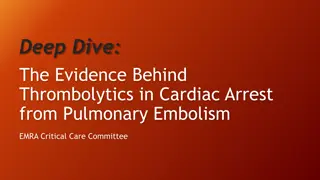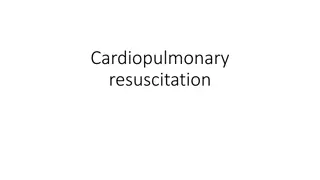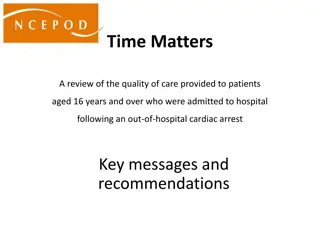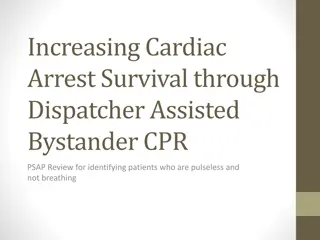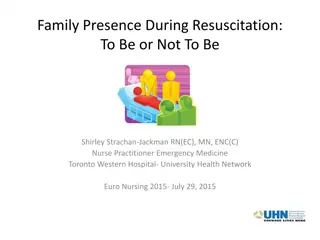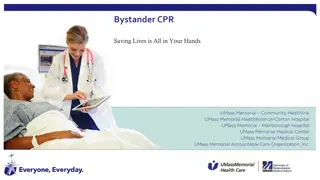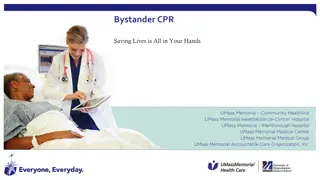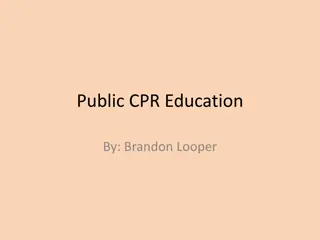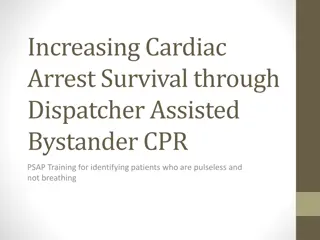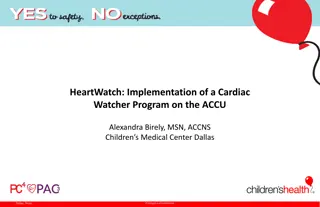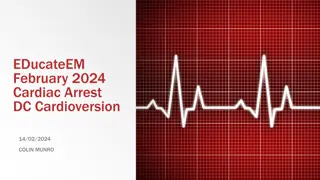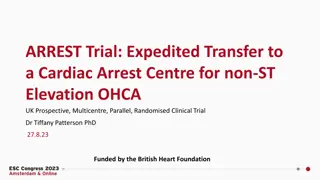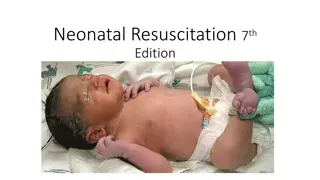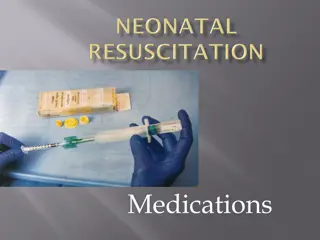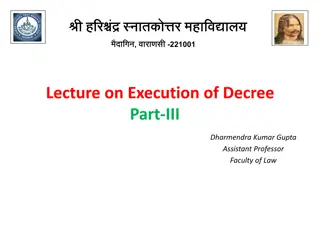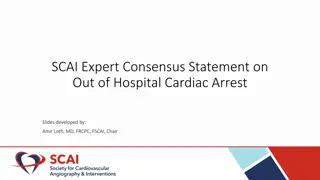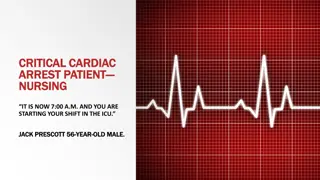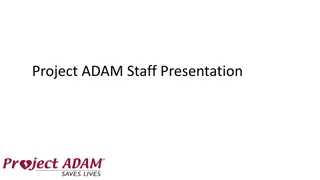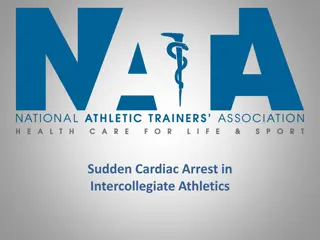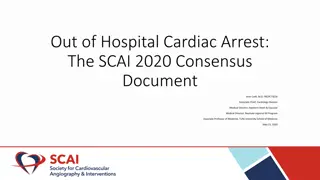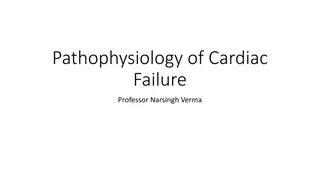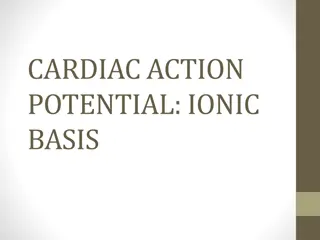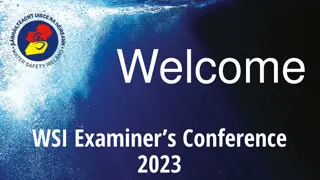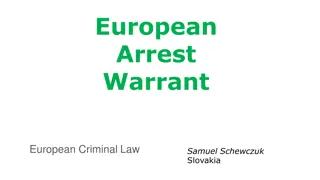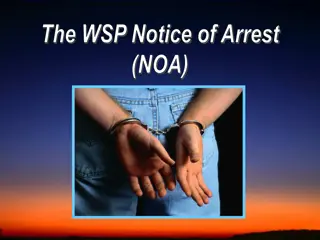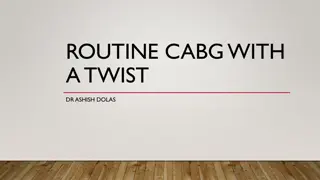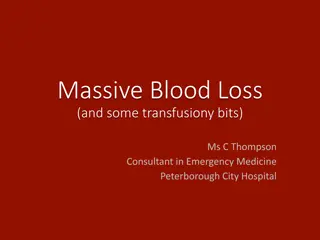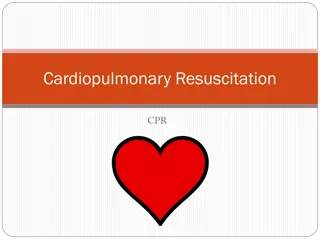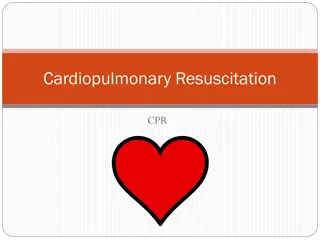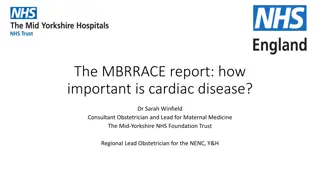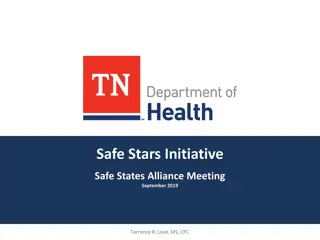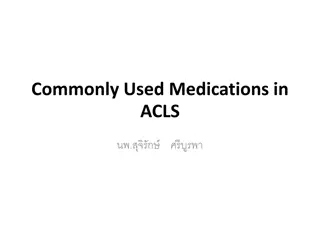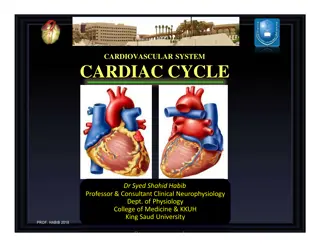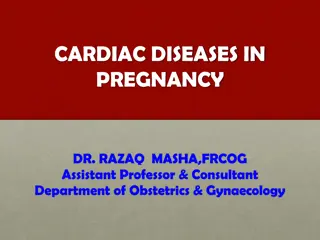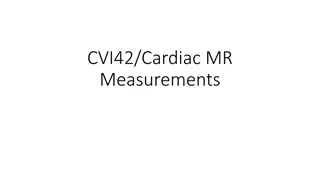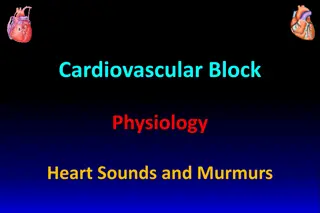Enhancing Post-Cardiac Arrest Resuscitation Care
Learn about interventions to improve survival and neurological recovery post-cardiac arrest. Discover key aspects of successful post-arrest care and eligibility for interventions reducing brain injury. Includes priorities, clinical cases, prehospital care, stabilization, and identification of treatable causes of cardiac arrest.
Download Presentation

Please find below an Image/Link to download the presentation.
The content on the website is provided AS IS for your information and personal use only. It may not be sold, licensed, or shared on other websites without obtaining consent from the author. Download presentation by click this link. If you encounter any issues during the download, it is possible that the publisher has removed the file from their server.
E N D
Presentation Transcript
ENLS Version 5.0 Resuscitation Following Cardiac Arrest Content: Kara R. Melmed, MD; Sarah Livesay, DNP, APRN, FNCS, FAAN; Matthew Kirschen, MD, PhD With contributions from: Jason McMullan, MD, Scott Thomas May, PharmD, BCPS, BCCCP, Victoria McCriedie, MBChB, PhD, FRCPC, MRCPUK, UNCS Slides: Sarah Livesay Presented by: Katrina Peariso, MD
Learning Objectives Recognize interventions that may improve chances of survival and neurological recovery post-arrest Identify key aspects of successful post-arrest care Determine eligibility for interventions that attenuate secondary brain injury post- resuscitation
ENLS RCA Post-Arrest Priorities Identify and treat suspected cause of arrest Stabilize cardiopulmonary function Prevent re-arrest Provide adequate coronary and cerebral perfusion Evaluate for coronary intervention Evaluate for targeted temperature management Evaluate for transfer to center with specialty cardiac and neurocritical care See checklist for first hour
Clinical Cases Case 1 A 65-year-old presents to the ED 2 hours following Vfib arrest. ROSC was achieved after 30 minutes. The patient is hemodynamically stable and neurological examination reveals a comatose state. CT scan of the head reveals no acute abnormalities. Case 2 A 40-year-old presents to the ED in PEA arrest. ROSC was achieved after 8 minutes. The patient is hypertensive and neurological examination reveals a comatose state and anisocoria. CT scan of the head reveals diffuse subarachnoid hemorrhage.
Prehospital Care and Immediate Stabilization Arrhythmia stabilization Hemodynamic stabilization Hypotension and hypoxia associated with worse outcomes Volume and electrolyte correction Ventilation and oxygenation Then rapid consideration for: Coronary (PCI) intervention as appropriate Prevention of secondary brain injury
Identify Treatable Causes of Cardiac Arrest VF/VT/Asystolic Arrest Cardiac Acute coronary syndromes Intracranial ICH or SAH Other Trauma Pulmonary Embolism Overdose Shock Bradycardia/PEA Arrest
Clinical Cases Clinical Interventions? Case 1 65-year-old in Vfib arrest Etiology cardiac Coronary angiography Case 2 40-year-old in PEA arrest Etiology Intracranial/SAH Coil embolization
Prevention of Secondary Brain Injury Evolving and conflicting evidence on how to best support the cardiopulmonary system to prevent secondary brain injury Hemodynamic management for neuroprotection Systolic blood pressure at least >90mmHg Pulmonary management for neuroprotection PaCO2goal 35-45mmHg Avoid hypoxia and hyperoxia Target temperature corrected PaO2 80-120 mmHg
Targeted Temperature Management Intervention to prevent secondary brain injury Decreases oxygen demand Attenuates multiple cellular pathways associated with secondary brain injury Temperature management, including: Interventions to actively prevent fever Interventions to decrease body temperature below normal
Determine Eligibility for TTM Shockable out of hospital cardiac arrest Strong recommendation Non-shockable out of hospital cardiac arrest Weak recommendation In-hospital cardiac arrest Weak recommendation Absolute contraindications Rapid neurologic recovery Illness that precludes meaningful recovery Prior do-not-resuscitate wishes > 12 hours following arrest
Clinical Cases Should We Start TTM? Case 1 65-year-old in Vfib arrest Etiology cardiac YES! Case 2 40-year-old in PEA arrest Etiology Intracranial/SAH
Evidence for Therapeutic Hypothermia (TH) Two trials comparing 33 C for 12-24 hours in out of hospital cardiac arrest (2002) (shockable rhythms only) Results of HACA and Bernard Trials (33 C) Primary outcome poor neurologic outcome Secondary outcome - death Bernard 23% ARR (26% vs. 49%) NNT = 4 17% ARR (51% vs. 68%) NNT = 6 HACA 16% ARR (39% vs. 55%) NNT = 6 (4 25) 14% ARR (41% vs. 55%) NNT = 7 (4 33) Bernard et al. N Engl J Med 2002;346:557 N Engl J Med. 2002 Feb 21;346(8):549-56.
Targeted Temperature Management (TTM) TTM trial (2013) 33 C versus 36 C No difference with respect to mortality or neurologic outcome between 33 C and 36 C at 180 days Intervention period of 72 hours at randomization Detailed and standardized methods of neurological prognostication TTM2 trial (2021) OHCA 33 C versus targeted normothermia to 37.8 C No difference in incidence of death or neurologic outcome between groups Nielsen et al TTM Trial. NEJM 2013; 369 (23):2197-206.
Temperature Management The AHA, ILCOR, the American Academy of Neurology, and the Neurocritical Care Society all recommend instituting TTM at a target temperature between 32oC- 36oC (strong recommendation, low quality of evidence) Regardless of the target temperature selected: TTM requires active temperature management Shivering prevention Comprehensive bundle of care Developing systems to safely and effectively deliver TTM requires significant institutional support, particularly to ensure that intervention is continuously available
When is Targeting 36oC Preferable to 33oC? Condition Active or high risk of bleeding: Surgical bleeding Intracranial bleeding Hemorrhagic diathesis Traumatic etiology of arrest Known presence of cold agglutinins (usually only if temp <31 C; avoid external cooling)
Clinical Cases Target Temperature? Case 1 65-year-old in Vfib arrest Etiology cardiac 33 C-36 C Case 2 40-year-old in PEA arrest Etiology Intracranial/SAH 36 C
Induction of TTM Core temperature management Endovascular, esophageal, bladder, or rectal Rapid induction of cooling Surface, intravascular, intranasal, or esophageal cooling devices Medical management of sedation and shivering
Seizure Detection with TTM EEG monitoring indicated in all TTM patients Non-convulsive status epilepticus 12-24% in adults Up to 47% in pediatric population EEG patterns with malignant or awakening features used for prognostication and management
Shivering Management Shivering triggered at 36.5 C Complications: Increased temperature Increased metabolic demand/secondary injury Increased CMRO2 Shivering Prevention Anti-pyretic Acetaminophen Serotonergic Buspirone Analgesia Fentanyl or meperidine Sedation Dexmedetomidine, midazolam, or propofol Neuromuscular Blockade Vecuronium or rocuronium Other IV magnesium, skin counter-warming
Physiologic Changes with TTM Bradycardia More pronounced at lower temperatures, 33 C Arrythmias QT prolongation common Fatal arrhythmias with core temperature 28 C Cold diuresis Hypokalemia, hypomagnesemia, hypophosphatemia
Key Physiological Changes Induced by Hypothermia and Management MAP goal > 80mmHg for cerebral perfusion Bradycardia: usually no treatment; atropine ineffective, use beta-agonists Goal PaO280-120 mmHg, avoid hypoxia and hyperoxia Goal PaCO2> 40 mmHg, avoid hyperventilation Cold diuresis May K, Mg, phosphorus May contribute to hypovolemia Intracellular shift of potassium Levels will rise again with rewarming Cardiovascular Pulmonary Renal and Electrolytes Endocrine Heme Increased insulin resistance, insulin drip Coagulation enzymes impeded 35 C Mild bleeding in 20% of TTM patients, not significantly different than normothermia group Significantly decreased pharmacokinetics/drug metabolism Pharmacology
Rewarming and Maintenance of Normothermia Rewarm Target Rewarm rate 36.5-37.5 C Recommend rate 0.25 C/hr (range 0.1- 0.5 C/hour) May require 12-24 hours depending on starting temperature K glucose Hypotension Continue anti-shivering protocol Once rewarmed, discontinue any paralytics and then later sedation and analgesia Aggressive fever prevention Rewarm Duration Electrolyte changes Endocrine changes Cardiovascular changes Shivering Maintain euthermia for 48hrs
Neurological Prognostication Accurate prognostication is challenging Drug clearance imperative, as significantly prolonged during TTM No sign, symptom, or combination of findings short of brain death precludes favorable recovery in the first 72 hours Trained and experience clinicians are imperative
Clinical Cases Prognostication Case 1 Vfib Arrest Patient underwent TTM and PCI for coronary occlusion. Approximately 96 hours after presentation, the patient began to follow commands. He was discharged to care facility with high likelihood of meaningful recovery. Case 2 PEA Arrest Patient underwent TTM, coil embolization of aneurysm, and ventricular drain placement for subarachnoid hemorrhage. Approximately 3 days after admission, patient awake and following commands. Patient was monitored for vasospasm over 2 weeks and discharged home without any focal neurological deficits.
Pediatric Considerations Respiratory failure common etiology of pediatric cardiac arrest, but not the only mechanism of arrest in this population Post-resuscitation efforts should target limiting secondary end-organ injury Avoid hypotension and hypoxemia Seizure and status epilepticus are common post-arrest Consider continuous EEG monitoring if encephalopathy persists Fever is common and associated with poor neurologic outcomes PALS Guidelines for comatose post-arrest TTM of 36-37.5 C for 5 days or TTM of 32-34 C for 2 days followed by 3 days of TTM to 36-37.5 C Prognostication is challenging Consider multiple factors/variables
Nursing Considerations Interventions aimed at: High-quality CPR during arrest event Close monitoring post-arrest for early deterioration Maintaining cerebral perfusion Preventing secondary brain injury Close neurologic, hemodynamic, & respiratory monitoring Management of TTM throughout all phases
Handoff Communication Priorities Communication Patient age, pre-arrest circumstances Duration of cardiac arrest and initial arrest rhythm Most likely etiology of arrest, if known Neurological examination on first assessment PCI eligibility Time TTM started and target temperature Current core temperature Current drug infusions (especially sedative and vasoactive agents)
Practice Question 1 A 22-year-old man was resuscitated from a Vfib arrest after a motor vehicle accident The team is preparing to initiate targeted temperature management (TTM) when the ED physician states that the CT scan has revealed an abdominal hematoma and a splenic laceration The ED physician is uncertain if he should start TTM What should be your recommendation regarding the appropriateness of TTM? A. Bleeding is an absolute contraindication for TTM B. A target temperature of 33 C can safely be implemented during the splenectomy C. A target temperature of 36 C is probably advisable because this degree of hypothermia will not affect coagulopathy D. TTM should always be initiated after Vfib cardiac arrest E. A target temperature of 33 C will be accomplished easily because the OR is cold, and anesthetics blunt the hypothalamic response
Practice Question 1 A 22-year-old man was resuscitated from a Vfib arrest after a motor vehicle accident The team is preparing to initiate targeted temperature management (TTM) when the ED physician states that the CT scan has revealed an abdominal hematoma and a splenic laceration The ED physician is uncertain if he should start TTM What should be your recommendation regarding the appropriateness of TTM? A. Bleeding is an absolute contraindication for TTM B. A target temperature of 33 C can safely be implemented during the splenectomy C. A target temperature of 36 C is probably advisable because this degree of hypothermia will not affect coagulopathy D. TTM should always be initiated after Vfib cardiac arrest E. A target temperature of 33 C will be accomplished easily because the OR is cold, and anesthetics blunt the hypothalamic response
Practice Question 2 A patient is resuscitated after a witnessed V-tach arrest in the ED Following return of spontaneous circulation, targeted temperature management (TTM) is initiated with goal temperature of 33 C The cardiology team prepares the patient for angiography and is concerned about intra- procedural arrhythmia and asks that you stop active cooling measures What is the most appropriate course of action? A. Allow for passive rewarming during the procedure but reinitiate TTM after the procedure B. Allow for passive rewarming during the procedure; Do not reinitiate TTM after the procedure C. Adjust the temperature goal to 37 degrees C D. Continue TTM; There is no increased risk of arrhythmia E. Discontinue TTM
Practice Question 2 A patient is resuscitated after a witnessed V-tach arrest in the ED Following return of spontaneous circulation targeted temperature management is initiated with goal temperature of 33 C The cardiology team prepares the patient for angiography and is concerned about intra- procedural arrhythmia and asks that you stop active cooling measures What is the most appropriate course of action? A. Allow for passive rewarming during the procedure but reinitiate TTM after the procedure B. Allow for passive rewarming during the procedure; Do not reinitiate TTM after the procedure C. Adjust the temperature goal to 37 degrees C D. Continue TTM; There is no increased risk of arrhythmia E. Discontinue TTM


